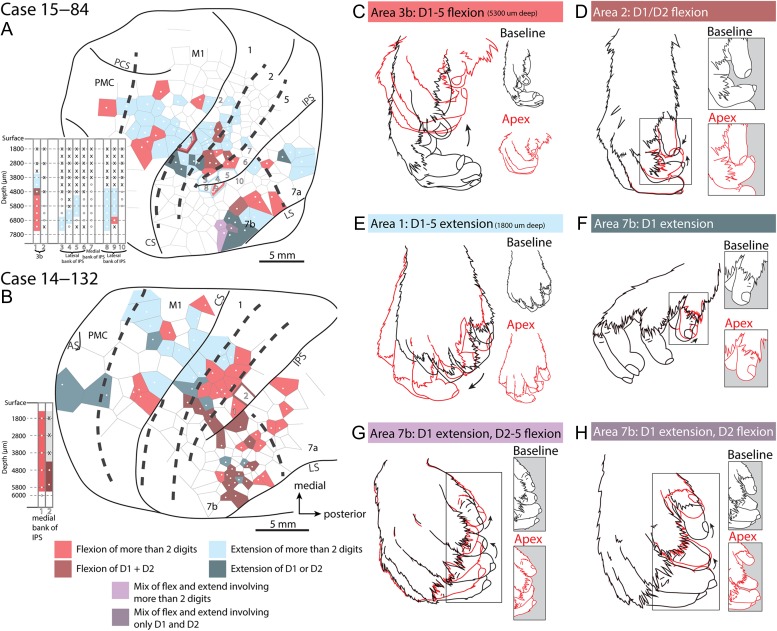Figure 7.
Digit maps. Movement maps for digits for cases 15–84 (A) and 14–132 (B). The Veronoi tile color corresponds to types of digit movements that were elicited. All other portions of the motor map have been removed such that this map only represents specific digit flexions or extensions. Depth information is provided in the insert to the left of the main maps with each column number corresponding to the penetration site numbers on the map. (C–H) Examples of different movement types. Black indicates the starting position of the movement, while red represents the apex of the movement. In the maps (A,B), pink represents sites where ICMS evoked flexion of more than 2 digits such as in a full hand grasp (C), while brown tiles represent only D1 (thumb) or D1 and D2 (index finger) flexion, such as in a precision grip (D). Light blue represents extension of more than 2 digits (E), while dark blue represents sites where only D1 or D1 and D2 extended (F). Purple indicates combinations of digit flexions and extensions. Light purple indicates that D1 extension and D2–5 (middle finger to pinky) flexion (G). Dark purple indicates extension of D1 with flexion of only D2 (H). Conventions as in previous figures.

